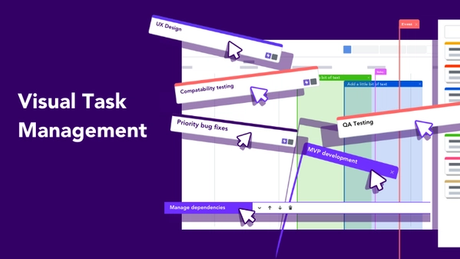Agile workflow
5 min read
How Lean Principles Support Productivity and Performance
Fri Aug 27 2021
Lean principles focus on delivering greater customer value by using minimal resources. Enterprises use these lean principles to practice continuous improvement based. They base their improvements partly on the practice of zero waste.
Here, you can improve your knowledge about lean principles to increase productivity. You can also use software tools to support positive change in your work environment. A lean-agile team is more productive and team members get to share their new knowledge.
The history of lean principles
Inspired by Ford’s mass manufacturing system, Eiji Toyoda created the "Toyota Production System.” This served their customers and introduced "Just-in-Time" (JIT) manufacturing.
JIT means only stocking enough vehicles to streamline rapid production. By only keeping an inventory of required parts on hand, a company saves money and time.
Starting here, the lean methodology has evolved over time. Now, lean consists of three main concepts of purpose, people, and processes.
The purpose of lean concepts is to give the customer what they want, reduce waste, and focus on employee morale. It also encourages accountability. Lean promotes ownership of work, problems, and successes.
Overview of lean principles
Organizations use lean principles to enhance overall performance. They do this by being careful how they use their scarce resources to meet customer demand.
The concept and practice of lean principles include:
- Elimination of waste
- Incorporating quality via end customer value
- Generating knowledge among team members
- Postponing workflow commitments
- Produce rapid delivery
- Respecting people
- Encouraging holistic process improvements
Practicing the lean principles
The lean principles require lean processes and lean tools. Therefore, if you want a lean organization, the leadership must support lean thinking and provide employees (people) with the tools to achieve this aim.
Here’s how to enact the lean principles:
Focus on value
This means producing products that customers want by encouraging them to provide details and feedback about products and services.
Kaizen is a part of Japanese philosophy that highlights the elimination of waste in a quest to change for the better, thus producing greater customer value.
Use value stream mapping
This process involves mapping out all the people and the actions needed to deliver a desirable end product. You get to see which processes work and which do not add value. You also have a better chance of identifying bottlenecks before they become a problem.
Once you do a bottleneck analysis, you can eliminate obstacles and improve processes. A bottleneck analysis involves getting to the root cause of what is holding up completion of the work and finding better processes to align all work batches that are dependent on each other.
Develop a logical workflow
To do this, you’ll focus on implementing the correct steps to create value in a logical sequence.
You can help streamline workflows by using Scrum sprint principles and break the work into smaller parts. You can also use tools like strategic roadmaps to visualize and improve Scrum or Kanban workflows.
Develop a pull system
A pull system ensures that teams know what to do and when, so they use less effort in creating outputs.
A pull system responds to demand. If there is a demand for a product, you respond by doing whatever is necessary to meet that demand. Knowing there is demand helps reduce non-value processes and optimize resources by using JIT or Kanban.
Encourage continuous improvement
You can use the Kaizen approach and other elements of the lean philosophy to enhance continuous improvement by constantly finding ways to do things better.
One way to do things better is to continue checking your value stream mapping to ensure that everyone stays on board. You must also ensure that all employees participate in lean processes and actively look for ways to improve the supply chain.
The benefits of implementing lean processes
Any organization that wants to take the lean principles route can anticipate some excellent benefits.
Several of these benefits include:
- Improving team member and team communications
- Empowering people to make decisions and engage in ongoing positive change
- Developing integrated cross-functional teams who share knowledge and skills
- Enhancing end goal delivery to augment end customer value
- Reducing the overall time to deliver that value to customers
Besides using Scrum stand-up meetings and software development tools and processes, you can use more lean tools to create a team or organization that embraces lean thinking.
Lean principles tools
Organizations can use metrics such as sales data and customer feedback as tools to assess customer demand. But, only after identifying the value can organizations use the lean tool of value stream mapping to further their end goal.
You can also browse through the information resources at the Lean Enterprise Institute to learn more about lean principles. You can also explore other lean thinking such as Six Sigma, Error Proofing, Plan-Do-Check-Act (PDCA), and other tools to support a lean organization.
Jira software tools from Easy Agile
Easy Agile provides organizations and teams with multiple tools to help streamline their workflows. For instance, you can use Jira to help develop logical workflows and get your teams up to speed on lean thinking.
Tools like Easy Agile Scrum Workflow for Jira are available at no cost to ease this positive change. Another tool that complements value stream mapping is Easy Agile Programs for Jira.
Adopting lean principles is much easier with the support of Easy Agile resources, so get your lean team going today.

